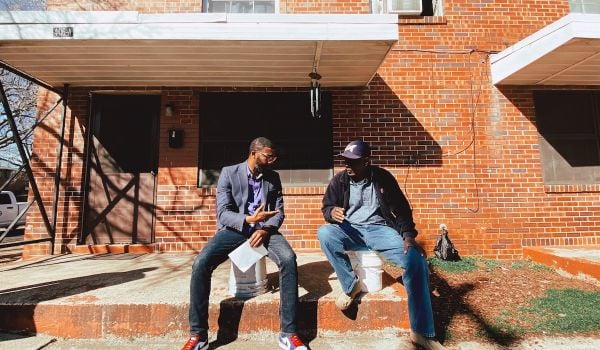Many cities, and some states, have encouraged remote workers to migrate with offers of subsidized co-working space and housing incentives. Northwest Arkansas, dubbed “Disneyland for mountain bikers,” is offering mountain or road bikes to prospective residents as part of its incentive package. Tulsa Remote has welcomed over 2,500 remote workers to the second-most populous city in Oklahoma with a $10,000 lump sum homeownership initiative – in a state where the median home price of $205,500 is already quite affordable, at almost half the national average. These programs garner headlines and market cities and towns often overlooked by wealthy remote workers living largely in the nation’s most productive metropolitan regions. Yet, aside from marketing, remote work incentives don’t really bear fruit.
First, simply offering a remote incentive does not guarantee workers will move. One town in Michigan yielded only a single relocated worker who already had existing ties to the area through family. Second, remote work incentives ignore prior residents who may have moved into the area, those who don’t work remotely, or other long-time residents, stirring up a sense of unfairness. Third, and finally, remote work incentive programs create instability by encouraging residents to move multiple times, seeking to maximize remote work incentives generally. Encouraging transiency does not build strong community bonds.
Remote work incentives will not solve the problem of stabilizing cities and towns experiencing population decline, but there are other steps that local leaders can take to make their locality more appealing to workers and families looking to make a move.
Invest in Infrastructure & Amenities
In talking with professionals across the country as I conducted the research that went into a study published last year in the Indiana Law Journal titled Purchasing Population Growth, the most common themes people shared when asked what drew them to their current community were unsurprisingly related to infrastructure. Schools, parks, playgrounds for families, libraries, transportation, retail shopping, employment, and healthcare all contribute to resident satisfaction.
In Philadelphia, for instance, researchers at Wharton were able to show significant increases in average home prices (one indicator of demand) when investments such as a business improvement district, streetscape improvements, and attractive commercial corridors were added. The same study showed that a 1% increase in the crime index was associated with a 14% decrease in home values. In another study based in Charlotte, North Carolina, researchers even showed that proximity to a craft brewery increases home values between 3% to 10%. Local leaders take note.
Address High Housing Costs
Housing costs continue to be the greatest expense for individuals and families. It is not a surprise that U.S. consumers owe almost $14 trillion in residential mortgage debt. However, lower housing costs can also be one of the strongest tools when seeking to lure families and workers to relocate.
Local leaders can address high housing costs through a variety of tools, including zoning reform, inclusionary zoning, and event community land trusts. Zoning reforms, specifically permitting in-fill housing designs, as well as accessory dwelling units, can add units in high-cost parts of the country. In lower-cost areas, zoning reforms can permit flexibility to keep costs low and allow for maximum design and creative construction. Inclusionary zoning — offering developers the ability to build more densely in exchange for offering some housing units to low-income families — addresses both supply-side and demand-side challenges. And community land trusts add an additional flexible form of ownership for families and workers unable to access traditional housing options.
Bend, Oregon, is an example of a small city using zoning reform to solve for the lack of affordable housing. Bend officials eased the ability for owners to build Accessory Dwelling Units (ADUs) — the city even provides pre-approved ADU plans. In 2016, ADU construction doubled following Bend’s easier permitting process. Other cities like Minneapolis have used zoning to bring down apartment prices. Seattle has used density bonuses in exchange for affordable units in many of its neighborhoods.
Provide Universal Basic Income
Localities from Santa Fe, New Mexico, to Jackson, Mississippi, and New York State’s Hudson Valley have all experimented with direct cash payment to low-income families and individuals who meet certain goals and program criteria. These direct payments have proved incredibly successful at increasing employment and productivity, aiding well-being, decreasing stress, and allowing families to pay off debt and afford basic necessities. “I don’t have to stay up at night worry[ing] about my rent and I can stay focus[ed] on my studies and support myself without being a financial burden on my family. [It has] been immensely nice,” one Hudson, New York, resident receiving payments said. Temporary payment programs redistributing funds to families to cover necessities of life are a serious tool that prudent local leaders should consider adopting in their communities.
Government and businesses can act locally to improve community attractiveness. Keeping housing costs down through zoning reform, offering universal basic income temporary transfers, and making infrastructure investments in community amenities can make an immense impact. Where programs meant to attract remote workers miss the mark, investments within communities are the solution to stabilizing population decline.

Ted De Barbieri teaches courses in property, housing law, state and local government, and community economic development law and directs the Community Economic Development Clinic. His scholarship examines ways the public can engage in land use approvals and economic development activities and how that engagement can lead to reforms in economic and social systems. His articles have appeared or are forthcoming in the Fordham Law Review, Indiana Law Journal, UC Irvine Law Review, George Mason Law Review, Florida State University Law Review, Yale Law & Policy Review, Cardozo Law Review, Fordham Urban Law Journal, and Journal of Affordable Housing & Community Development Law. He is the author of the 6th edition of Local Government Law, part of West Academic’s hornbook series.

















Add to the Discussion
Next City sustaining members can comment on our stories. Keep the discussion going! Join our community of engaged members by donating today.
Already a sustaining member? Login here.